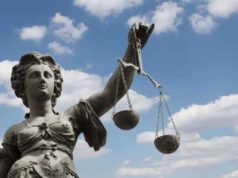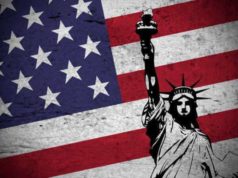Table of Contents

William Rehnquist: The Sixteenth Chief Justice of the United States Supreme Court
William Rehnquist served as the sixteenth Chief Justice of the United States Supreme Court, from 1986 until his death in 2005. During his tenure, he presided over several significant cases, including Bush v. Gore and United States v. Lopez. In this article, we will explore Rehnquist’s life and contributions to the Supreme Court. We will also examine some of the key cases he oversaw and discuss their impact on the US legal system and politics. Additionally, we will provide 10 interesting facts about William Rehnquist and his time as Chief Justice.
Background and Early Career
William Hubbs Rehnquist was born on October 1, 1924, in Milwaukee, Wisconsin. He attended Stanford University and later served in the US Army Air Corps during World War II. After the war, he attended Harvard Law School, where he graduated with honors in 1952. Rehnquist later worked in private practice and as a law clerk before joining the US Department of Justice in 1969. He was appointed an Associate Justice of the Supreme Court by President Richard Nixon in 1971 and was later elevated to Chief Justice by President Ronald Reagan in 1986.
Appointment as Chief Justice
In 1986, President Reagan nominated Rehnquist to succeed Chief Justice Warren Burger, who had retired earlier that year. Rehnquist was confirmed by the Senate and took his oath of office on September 26, 1986. He served as Chief Justice for nearly 19 years, until his death in 2005.
Major Cases and Contributions to the Legal System
During his tenure as Chief Justice, Rehnquist presided over several significant cases that helped to shape the US legal system and political landscape. Perhaps his most notable contribution was his role in several key decisions related to federalism and the role of the federal government in regulating society.
In United States v. Lopez (1995), for example, the Court held that Congress’s power to regulate commerce did not extend to regulating gun possession on school grounds. The decision was a significant blow to the federal government’s expansive interpretation of its commerce clause powers and helped to limit the power of the federal government in this area.
Rehnquist also played a key role in several cases related to civil rights and individual liberties. In Bush v. Gore (2000), for example, the Court effectively awarded the presidency to George W. Bush by halting a recount of votes in Florida. The decision was highly controversial and widely criticized by many legal scholars and political commentators.
Moreover, Rehnquist was known for his advocacy of judicial restraint and his opposition to judicial activism. He frequently emphasized the limited role of the courts in interpreting the Constitution and argued that the Court should defer to the elected branches of government whenever possible.
10 Interesting Facts about William Rehnquist
- Rehnquist was the fourth-longest serving Chief Justice in US history, serving for nearly 19 years.
- Rehnquist was known for his conservative views and his emphasis on judicial restraint, frequently advocating for a limited role of the courts in interpreting the Constitution.
- Rehnquist presided over several important cases related to federalism and the limits of federal power, including United States v. Lopez and Printz v. United States.
- Rehnquist was involved in several important cases related to civil rights and individual liberties, including Bush v. Gore and City of Boerne v. Flores.
- Rehnquist was a strong advocate of states’ rights and federalism, frequently arguing that the federal government had overstepped its bounds in regulating society.
- Rehnquist was known for his conspicuous sartorial choices, frequently sporting a black robe adorned with gold stripes.
- Rehnquist was a lifelong history buff, and frequently incorporated historical context into his legal opinions.
- Despite his conservative views, Rehnquist made several decisions that expanded individual rights and protections, including decisions related to the right to a speedy trial and the right to counsel.
- Rehnquist was a prolific writer and legal scholar, publishing several books and articles on legal history and constitutional interpretation.
- Rehnquist’s impact on the US legal system and politics remains a subject of debate and discussion among legal scholars and historians.
Conclusion
William Rehnquist was a prominent legal and political figure in the history of the United States Supreme Court, serving as Chief Justice for nearly 19 years. While he presided over several important cases related to federalism and individual liberties, including United States v. Lopez and Bush v. Gore, his emphasis on judicial restraint and states’ rights made him a controversial figure among legal scholars and politicians alike. Despite criticism from some quarters, Rehnquist remains an influential figure in US legal history, and his legacy continues to be a subject of debate and discussion among legal scholars and historians today.
William H. Rehnquist was a lawyer and political figure who severed the Supreme Court as Associate Justice and later became Chief Justice of the United States Supreme Court. During his early life he entered the United States Air Force and served in World War II from 1943-1946.
William Rehnquist was also interested in meteorology. He took a couple of meteorology programs which lead him to a job overseas as a weather instructor in North Africa. William Rehnquist became Chief Justice after Warren Burger retired in 1986.William Rehnquist was nominated by Ronald Regan to fill the position. Many other political officers were pleased and supported William H. Rehnquist as he took place in the office. Members of the Senate felt he would be a great judicial leader and his nomination was met with acceptance and joy by the majority.
William H. Rehnquist was known as a conservative. During his time served as Chief Justice, he was the only member of the Court with conservative views, which did not
stop him from applying his decisions. One of his early rulings in 1973 was regarding the Committee for Public Education and Religious Liberty v. Nuquist. Public schools approached the Court for State aid and the implementation of religion in the pubic
school system. William Rehnquist made a dissent to this request along with other
Court members who were not fond of the idea of any religious beliefs being regulated
in the public school system.
However, 30 years after his disapproval, he approved school vouchers after the Zelman
v. Simmons-Harris case which parents could use to send their children to any school of their choice. With the belief that the school would further a child’s knowledge. Although other members of the Court opposed this ruling, William Rehnquist finally voted to approve this Bill in 2002. Many rulings were given the final call by William Rehnquist. He is the one that had the ultimate deciding factor of women’s involvement in the army in
1981. Although he signed previous laws in favor of some feminist beliefs, his final call on women’s drafting remained an exemption.
Other calls made by Rehnquist reversed previous judgments made by judges. He wrote a
decision recalling the approval of raising teachers salaries in the State of Missouri. This was one of a few cases that William Rehnquist realized was a prolonged determination by the judicial court system. It is his work as Chief Justice in later years for which William
H. Rehnquist will long be remembered. In the United States v. Morrison case, the Supreme Court reviewed a federal law that held the courts responsible for the rulings of domestic affairs which was always handled by State laws.
The case of the United States v. Morrison in which a college girl was raped by a football player caught the attention of the media and many people were looking towards the Supreme Court to provide a ruling. However, William H. Rehnquist passed a judgment that kept domestic affairs out of the hands of the Federal Court system, which was also applied to the domestic case of the United States v. Lopez.























